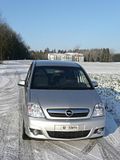
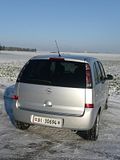

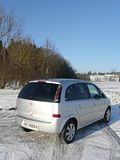


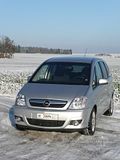
Experience has taught me that despite your best efforts to “guarantee” the model of rental car that you will receive, it is more or less mission impossible. Even when you reserve a car from a model-specific group, and this will typically be something that little bit special, if the rental company lacks the car type you reserved when you arrive to collect it, you will be allocated something else, which could be anything from a minor difference to something radically and dramatically unlike your expectation, and not always an upgrade. I guess I have learned to take the proverbial rough with the smooth on this, and have figured out that about your only chance to influence what you get in which to drive off, is on arrival, to see what else is parked up, and try to negotiate with the rental agency staff. Sometimes, this will yield surprisingly good results, and often for little or no money, but other times it is more or less mission impossible. I had one of the latter at Zurich airport when collecting the latest test car. Not because the staff do not care. Far from it. I was greeted by name, as I walked up to the desk, and even though the lone counter rep was serving someone else, she asked him if she could just give me the paperwork so I could be on my way. A rather worn fob for an Opel popped out of the paperwork, but when I went through to the parking garage, I could see surprisingly few cars, and as this one was silver (far better for photography than yet another black or dark grey car, especially given the unpropitious weather forecast), and it was for a car I had never yet driven, so I just decided that the fates wanted me to have this one, inspected it, and set off.
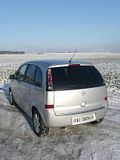

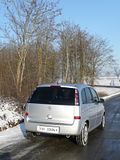
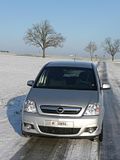


In a way, timing could not have been better, as only 48 hours earlier, I had completed the test of a Ford Fusion, a car targeted at a very similar marketplace, and thus I could envisage the ability to assess the Meriva not just in isolation, but with memories of that Ford still fresh in my mind. Unlike the Ford, which came with a 1.4 engine, this one was clearly marked 1.6, which means a 100 bhp 16 valve engine, and so considerably more powerful than the similarly sized Fusion. There were no other clues on the car or the paperwork to indicate which precise model I was going to be driving. Detailed study of Opel Switzerland’s web-site has persuaded me that what I got was the Enjoy version, which would seem to be the entry model in the Swiss range, with the Edition, the Cosmo and the economy special ecoFlex which only comes with the diesel engine, providing the alternatives. Opel CH are including a number of items that usually cost extra within the spec of the Enjoy and Edition models at present.
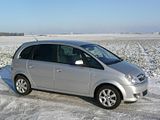
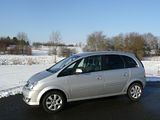

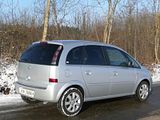
The 1.6 engine is unquestionably one of the better features of this car. For what is a relatively small car – as I was able to remind myself both when I wanted to parallel park in a tight spot, and when needing to turn it around – 100 bhp is decently generous and it endows the Meriva with reasonable performance. Like many modern petrol engines, it is not over-endowed with torque and the gearing is clearly set to optimise the emissions performance and fuel economy rather than in-gear acceleration, but the Meriva was able to scoot off into traffic with no issue and was able to build and maintain momentum on the German autobahns with relative ease. Only when trying to gain some extra speed in fifth gear at about 100 km/h was the increase in velocity a little tardy. Whilst this will never go down as one of the world’s great engines, it is refined enough and goes about its job with minimum fuss. There is a standard five speed gearbox, and the change quality is not bad. There is a slightly clunky feeling as you slot the lever between the gears, but there is no resistance to speak of, and the gate is precise so none of the vagueness or sloppiness that you encounter on some competitors (notably the PSA Group ones). Reverse is selected by lifting a collar and pulling the lever left and forwards. Using the gearlever, though, was more of a challenge, simply because it was set too far back. Memories of the first front wheel drive Cavalier came back to me, where, especially for those like me with short legs who have the seat well forward (though it was not as far forward as would be possible) you found that the gearlever was where you would expect the handbrake to be. Needless to say this meant that the handbrake – a conventional pull-up lever, thankfully – was also too far back. It was particularly awkward to use, as there is also a central armrest between the seats, which even when it was swivelled up to a vertical position, just got in the way.
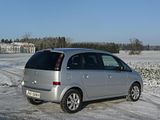
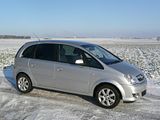
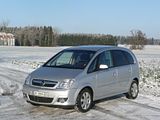
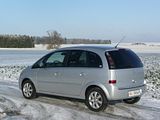
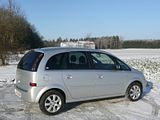
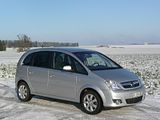
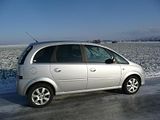
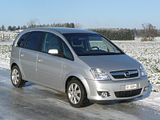
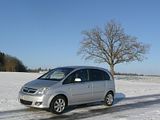

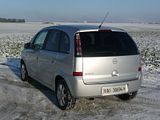
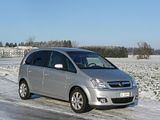
Whilst the Meriva had a better engine than the Ford, the positions are reversed when it comes to the other driving dynamics. Not a surprise, perhaps, and the gap in standards is not massive, but it is noticeable. There is just a little vagueness in the light steering of the Meriva, at the straight ahead position, and it lacks that special feeling which every recent Ford delivers so well. The car understeers a certain amount, and there is a modicum of roll on tighter corners, but even so, I perceived no issues when tackling the swooping bends that link various autobahns and road junctions in the Black Forest and Switzerland where the test was conducted. On 16″ alloy wheels, the ride was perhaps better than I expected, with the Meriva smoothing out the bumps and ridges quite well. At 140 km/h, it is not a particularly quiet car, or indeed a very frugal one. Overall consumption for the test distance of just over 500 km was 36 mpg. Not too bad, perhaps, but as most of that distance was at a steady speed and not much of it was at 140 km/h, but nearer 120, then nothing unduly remarkable. Even so, that is better than the 1.4 Fusion achieved, also with a test completed mostly on the motorway, but over a shorter distance.
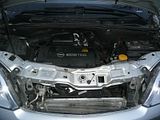
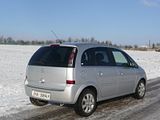

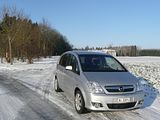

Prospective buyers are more likely to select a Meriva for the design of its interior than its ultimate dynamic prowess, it does no harm to recall. And here the design scores well. The rear seats are cunningly designed to allow the user to select between optimum space for people or luggage. They are split into three, with a narrow central section flanked by two outer seats which can be slid backwards and forwards. Set in their rearmost position, there is ample legroom, and with a backrest that can be inclined to the occupant’s choice, Headroom is certainly no lacking even with the seats in their most upright setting. The available boot space will vary, of course, based on the position of the rear seats. At its smallest configuration, there is still noticeably more space than in a Corsa or Fiesta, and there is a shallow storage area under the load floor where you could hide valuables, as well as some useful side pockets for those little loose items. The parcel-shelf did not appear to lift with the tailgate, but it is split into multiple narrow strips, so a piece can be folded back out of the way quite readily. The boot can be extended by dropping the rear backrests onto the seat squabs, and a small flap covers any gap that could be present if the seat is set well forward. Easy to use and flexible to allow the optimum configuration.
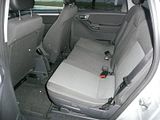
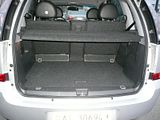
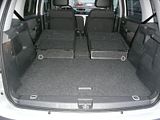



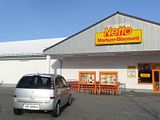
From the driver’s seat, there is no mistaking the fact that this is a GM Europe product. Anyone familiar with Corsa, outgoing Astra or Vectra will recognise the design language quite readily. Superficially, it looked to be of quite good quality, but the reality is the plastics are very hard to the touch. There is a thin fake carbon fibre strip along the dash and the door casings, which did nothing for me, in terms of a visual improvement. The instrument binnacle comprises speedometer, rev counter and dials for the fuel level and water temperature. They were clearly marked and easy to read. This car pre-dates GM’s dalliance with the one-touch column stalks, so they were totally conventional in operation, as is the light switch to the left of the wheel. A silver trimmed central part of the dash houses standard issue GM stereo and one-slot CD and the air conditioning controls. These latter were effective in helping me to warm up the cabin and take the chill off a very cold test day. Later, I had to dial the temperature down, as the system was in danger of roasting me. There is a sizeable glass area, so the cabin is light and airy. However, the very steeply sloping “A” pillar, set well forward is quite a hindrance to visibility at side junctions, and was not that welcome a design feature, although the corresponding quarter light on the passenger side was appreciated for the extra visibility that it endowed.
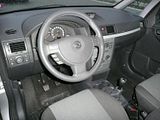
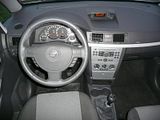
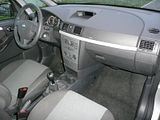
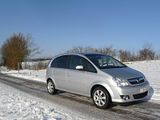


At this point in the market, even a top of the range model is not over-endowed with luxuries or fripperies. I initially thought that perhaps I had a Cosmo model, as the apparent give away is the fact that on this model, the rear lights are smoke-finished, and they were on the test car. However, it had a different style of alloy wheel, and many of the other features on the Cosmo, such as an on-board trip computer, enhanced radio with MP3 connection were not present. I think I got the Enjoy model, but am still not sure, as I could not completely correlate the spec on the Swiss website with the car I drove. Be that as it may, what I got was a car with front foglights, body-coloured door handles, and 16″ alloy wheels, electric windows front and back (though the switches were very small and fiddly), an allegedly leather covered steering wheel (but it was very low grade leather, if it was the cow hide stuff!), and the usual central locking, air bags etc. Adequate, but not over-embellished.
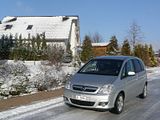
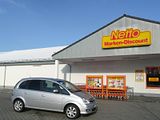
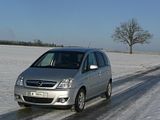
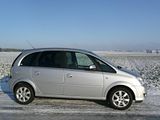

If I am honest, my expectations for the Meriva were not particularly high. The model has been around since 2003, and will indeed be replaced in mid-2010 by a brand new design, and I recall reading a very concise, but telling assessment from a fellow forummer, which suggested he was very far from impressed. Indeed, he damned the entire car in two well-chosen sentences. My own recent experience with the closely related Corsa was far from encouraging, too. And yet, the Meriva did rather better than that for me. It is not exciting, for sure, but it is practical. Provided you can live with the awkwardly placed gearlever and handbrake, there were no serious flaws with the Meriva, and so for someone looking for a car of this type, it would have to make the “worth considering” list. Is it a better car than the Fusion? I guess that depends on your priorities. The engine is better, but the dynamics are in favour of the Ford. I also recall my time with the Grand Modus, though the car was lumbered with a rather frustrating automatic gearbox that robbed it of some of the responsiveness you might hope for from a 1600cc mini-MPV. Which would I choose? To be honest, I am not sure, and I would want to try the new Kia Venga, as I suspect that while it might not quite hit the dynamic standards of the Ford, it may well be a better compromise than all these cars, and will almost certainly be far cheaper to buy and to own. As so often happens, then: “jury still out”. Don’t dismiss the Meriva, in this version at least, out of hand, though.
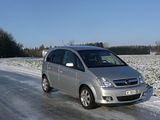
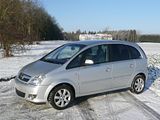
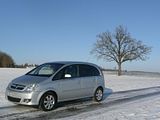
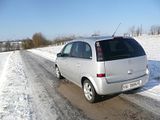
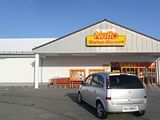
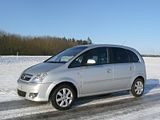

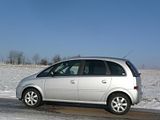
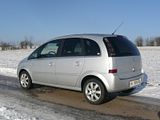
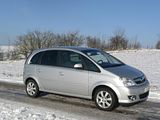
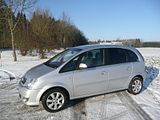
2009-12-15 10:41:06






























































































































